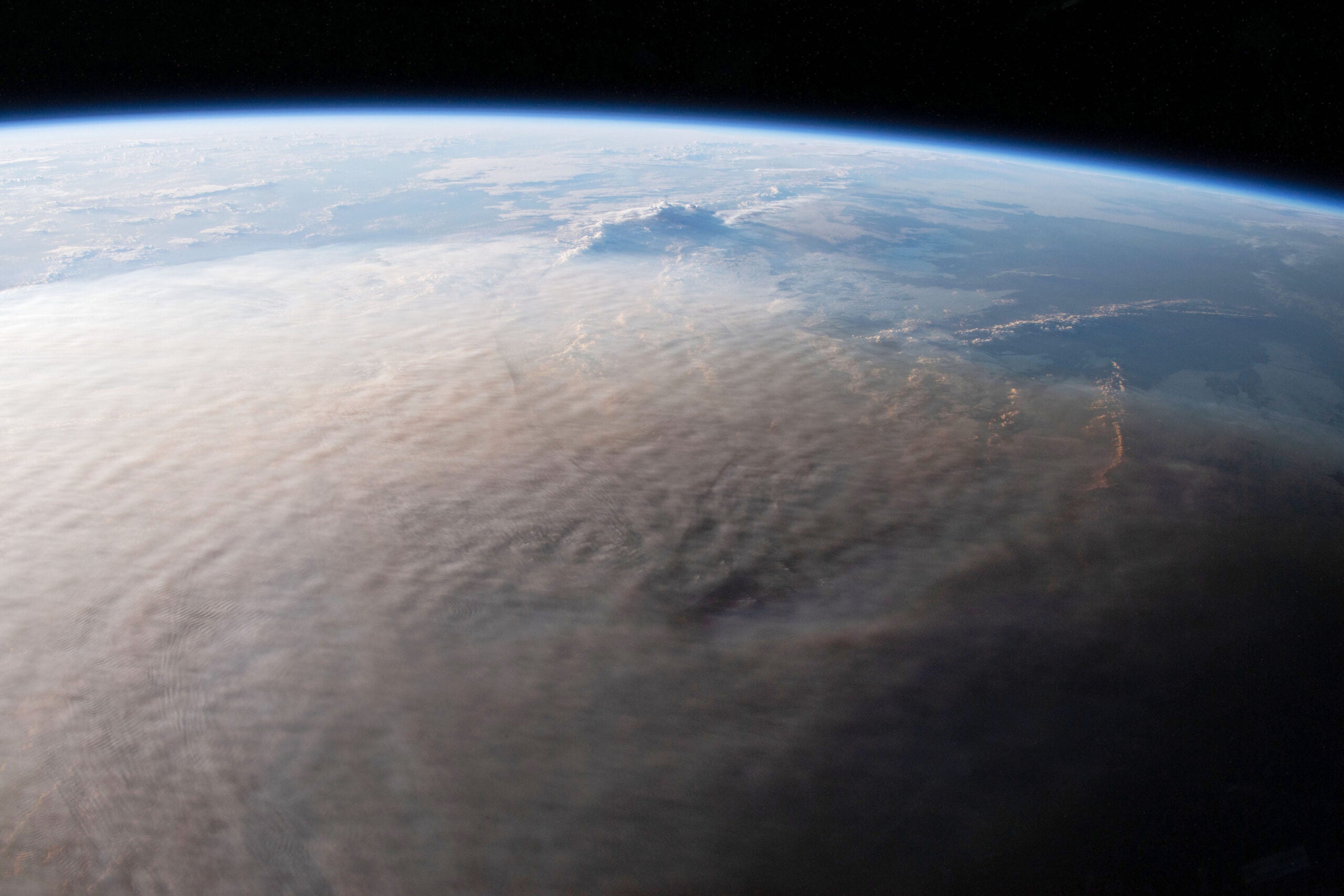How the Tonga eruption rang Earth ‘like a bell’
(2023)
In Popular Science
by RAHUL RAO
April 14, 2023
A detailed simulation of underwater shockwaves changes what we know about the Hunga Tonga-Hunga Ha’apai eruption.
When the Hunga Tonga–Hunga Haʻapai volcano in Tonga exploded on January 15, 2022—setting off a sonic boom heard as far north as Alaska—scientists instantly knew that they were witnessing history.
“In the geophysical record, this is the biggest natural explosion ever recorded,” says Ricky Garza-Giron, a geophysicist at the University of California at Santa Cruz.
It also spawned a tsunami that raced across the Pacific Ocean, killing two people in Peru. Meanwhile, the disaster devastated Tonga and caused four deaths in the archipelago. While tragic, experts anticipated an event of this magnitude would cause further casualties. So why didn’t it?
Certainly, the country’s disaster preparations deserve much of the credit. But the nature of the eruption itself and how the tsunami it spawned spread across Tonga’s islands, also saved Tonga from a worse outcome, according to research published today in the journal Science Advances. By combining field observations with drone and satellite data, the study team was able to recreate the event through a simulation.

It’s yet another way that scientists have studied how this eruption shook Tonga and the whole world. For a few hours, the volcano’s ash plume bathed the country and its surrounding waters with more lightning than everywhere else on Earth—combined. The eruption spewed enough water vapor into the sky to boost the amount in the stratosphere by around 10 percent.
The eruption shot shockwaves into the ground, water, and air. When Garza-Giron and his colleagues measured those waves, they found that the eruption released an order of magnitude more energy than the 1980 eruption of Mount St Helens.
“It literally rang the Earth like a bell,” says Sam Purkis, a geoscientist at the University of Miami in Florida and the Khaled bin Sultan Living Oceans Foundation. Purkis is the first author of the new paper.
The aim of the simulation is to present a possible course of events. Purkis and his colleagues began by establishing a timeline. Scientists agree that the volcano erupted in a sequence of multiple bursts, but they don’t agree on when or how many. Corroborating witness statements with measurements from tide gauges, the study team suggests a quintet of blasts, each steadily increasing in strength up to a climactic fifth blast: measuring 15 megatons, equivalent to a hydrogen bomb.
Then, the authors simulated what those blasts may have done to the ocean—and how fearsome the waves they spawned were as they battered Tonga’s other islands. The simulation suggests the isle of Tofua, about 55 miles northeast of the eruption, may have fared worst: bearing waves more than 100 feet tall.
But there’s a saving grace: Tofua is uninhabited. The simulation also helps explain why Tonga’s capital and largest city, Nuku’alofa, was able to escape the brunt of the tsunami. It sits just 40 miles south of the eruption, and seemingly experienced much shallower waves.
The study team thinks geography is partly responsible. Tofua, a volcanic caldera, sits in deep waters and has sharp, mountainous coasts that offer no protection from an incoming tsunami. Meanwhile, Nuku’alofa is surrounded by shallower waters and a lagoon, giving a tsunami less water to displace. Coral reefs may have also helped protect the city from the tsunami.
Researchers believed that reefs could cushion tsunamis, Purkis says, but they didn’t have the real-world data to show it. “You don’t have a real-world case study where you have waves which are tens of meters high hitting reefs,” says Purkis.
We do know of volcanic eruptions more violent than Hunga Tonga–Hunga Haʻapai: for instance, Tambora in 1815 (which famously caused a “Year Without a Summer”) and Krakatau in 1883. But those occurred before the 1960s when geophysicists started deploying the worldwide net of sensors and satellites they can use today.
Ultimately, the study authors write that this eruption resulted in a “lucky escape.” It occurred under the most peculiar circumstances: At the time of its eruption, Tonga had shut off its borders due to Covid-19, reducing the number of overseas tourists visiting the islands. Scientists credit this as another reason for the low death toll. But the same closed borders meant scientists had to wait to get data.

That’s part of why this paper came out 15 months after the eruption. Other scientists had been able to simulate the tsunami before, but Purkis and his colleagues bolstered theirs with data from the ground. Not only did this help them reconstruct a timeline, it also helped them to corroborate their simulation with measurements from more than 100 sites along Tonga’s coasts.
The study team argues that the eruption serves as a “natural laboratory” for the Earth’s activity. Understanding this tsunami can help humans plan how to stay safe from them. There are many other volcanoes like Hunga Tonga–Hunga Haʻapai, and volcanoes located underwater can devastate coastal communities if they erupt at the wrong time.
Garza-Giron is excited about the possibility of comparing the new study’s results with prior studies, such as his own, about seismic activity—in addition to other data sources, likethe sounds of the ocean—to create a more complete picture of what happened that day.
“It’s not very often that we can see the Earth acting as a whole system, where the atmosphere, the ocean, and the solid earth are definitely interacting,” says Garza-Giron. “That, to me, was one of the most fascinating things about this eruption.”
